AstroLab is one giant leap for Arturia — but will it really take off?
Arturia has been striving toward “the dream of combining the flexibility of software instruments with the reliability of hardware.” Has that dream become a reality in the AstroLab?
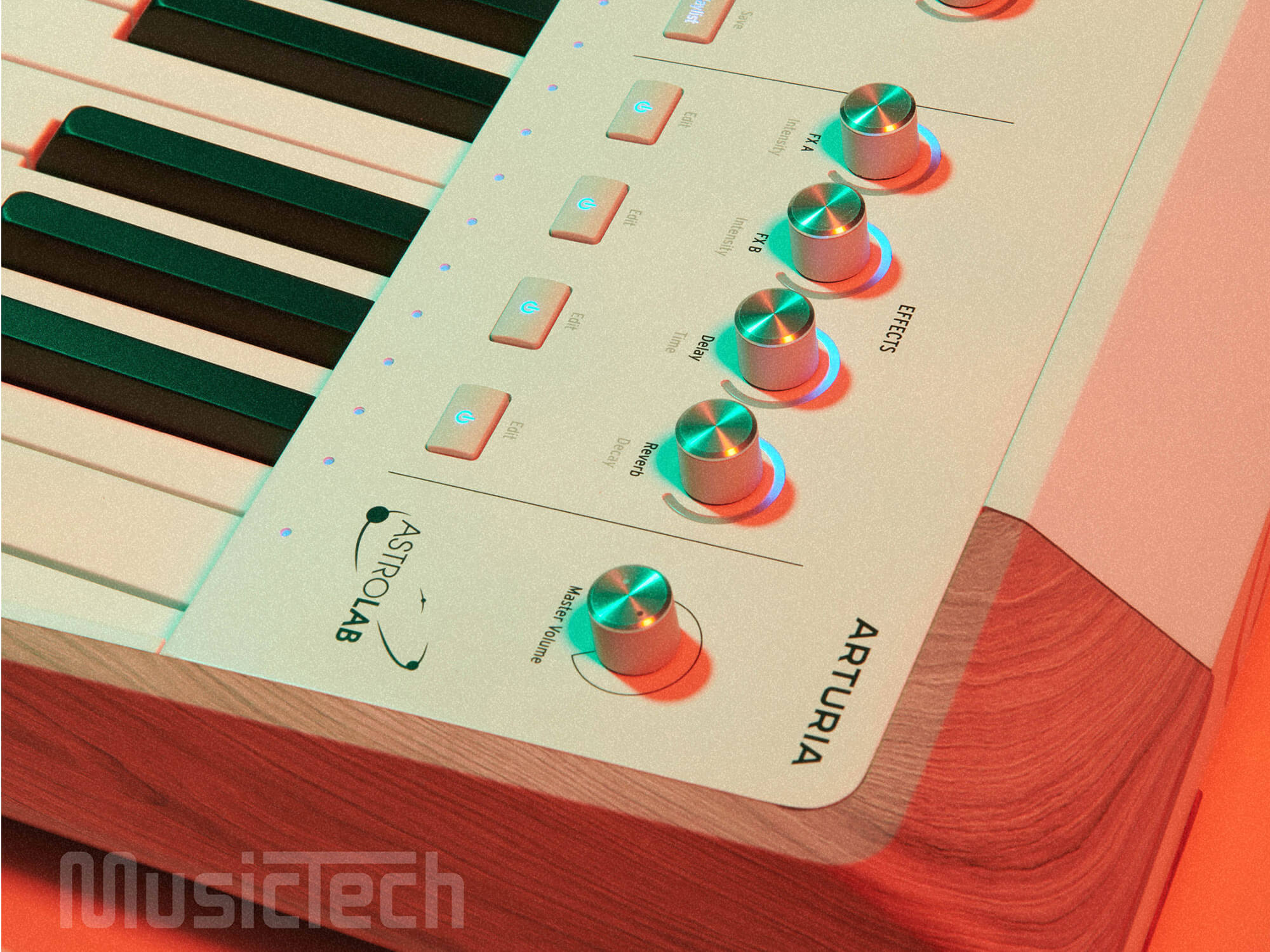
Arturia AstroLab. Image: Simon Vinall for MusicTech
Review Overview
Our rating
8
Our verdict
⊕ Gorgeous build quality
⊕ Spacious, ergonomic layout with tactile controls
⊕ Nicely weighted key bed to cater for a range of instrument types
— Screen Encoder can occasionally lead to unintentional clicking on the wrong item
— Slight lag when switching between presets
— Not able to delete Artist presets from the panel
—
Price: $1,600/£1,390/€1,599
Arturia isn’t pulling punches with the AstroLab. Its 60-page manual opens with a note from company founder and CEO Frédéric Brun declaring: ‘AstroLab encapsulates everything we’ve ever wanted to achieve; the seamless fusion of software and hardware […], the feeling of absolute creative freedom.’
Big words.
READ MORE: Arturia’s AstroLab: The story of an instrument 10 years in the making
What is Arturia’s AstroLab?
The AstroLab is ostensibly a hardware extension of Arturia’s Analog Lab plugin; a vast library of bespoke presets across dozens — though not all — of their category-leading V Collection software instruments (the latest edition of which MusicTech reviewed favourably). It’s a performance-focused, easy-access environment that has always necessitated a computer to run. Until now.
That’s right: the AstroLab allows presets from Analog Lab — included in the package, as it happens — to be loaded into a hardware instrument and taken onstage or into the studio with no computer in sight. Of course, it can also sync seamlessly, wirelessly if desired, with a computer running Analog Lab in real-time so, in the studio MIDI data can be retroactively assigned to any Analog Lab preset to have its sound edited and re-edited long after the player has left the building.
How do you use AstroLab?
The AstroLab is a weighty beast at a formidable ten kilograms, but it’s smart and ergonomic, too.
Its panel is centred around what Arturia calls the Screen Encoder; a circular, full-colour screen that’s also an encoder and button for selecting presets, adjusting effects, changing settings and a whole lot more.
Looking like Iron Man’s chest-worn arc reactor, the Screen Encoder greets you upon power up, bids you goodbye upon power down, and is generally the engine behind the AstroLab’s overall workflow.
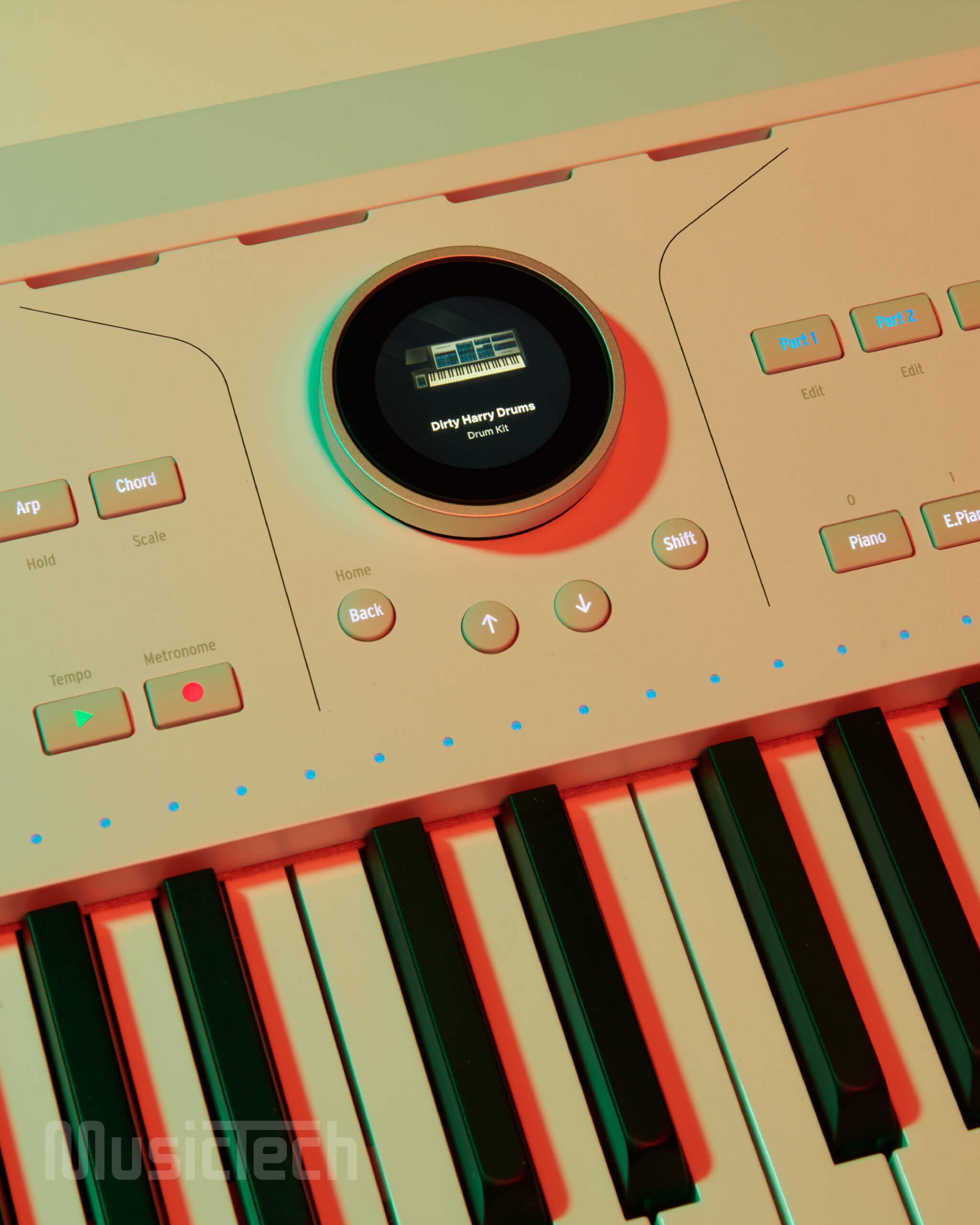
It’s no mystery why so much thought has gone into the Screen Encoder: things can get menu-heavy quickly here, so quick and intuitive navigation is key. We find on several instances that pushing the button also leads the encoder to scroll down an extra item, making for a wrong selection; but overall Arturia has got this right. The Home menu offers several ways to filter the AstroLab’s presets: by instrument, by instrument type, by favourites and even by artists — here, the AstroLab offers fairly faithful recreations of iconic synth and keys sounds from a selection of artists, from The Beatles to Bruno Mars and more.
There doesn’t seem to be a way to customise this list, at least from the panel (at the time of writing the literature for synchronising the Astrolab with Analog Lab is not yet available, nor the AstroLab Connect software for syncing over wi-fi). So, whether or not you consider yourself an A-Ha fan, you might find yourself stuck with the preset for Take On Me regardless. Perhaps this will become an option in future firmware versions.
As with Analog Lab, one supremely useful function comes in the form of Playlists. They’re very much editable from the panel and a place where presets can be arranged in specific orders for quick access during any song or set.
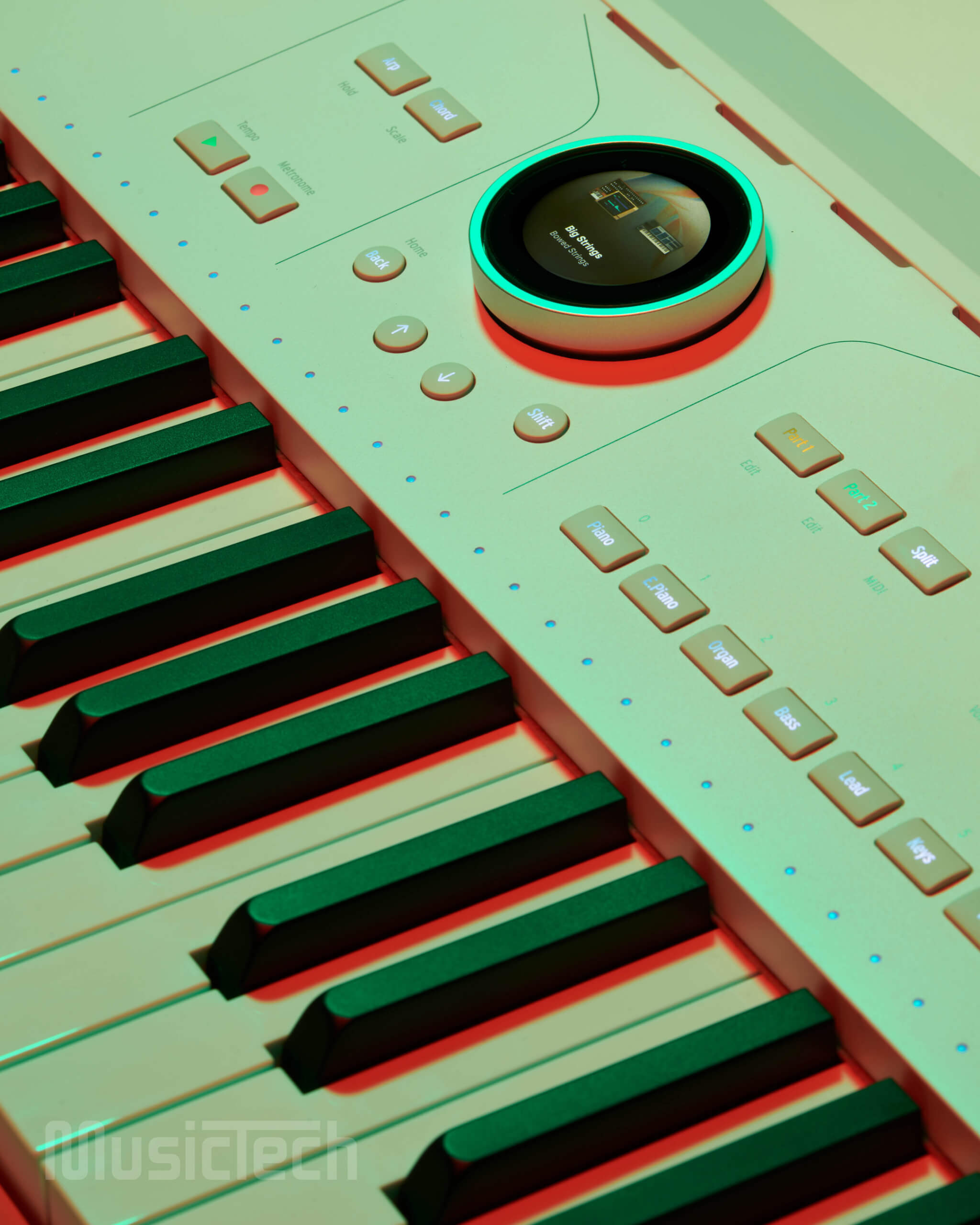
Beyond the Screen Encoder are simple controls for sound sculpting, effects (offering delay, reverb and two assignable effects), arpeggio and chord modes (with a variety of scales on offer). Record and Play buttons create MIDI loops, while buttons for splitting the keyboard into regions allow presets to be mixed and matched, whether split across the keyboard or layered on top of each other.
The AstroLab’s build quality is outstanding— which is important with so much emphasis on the hardware component. Wooden side panels, a spacious layout, immaculately responsive LED value displays and, of course, the AstroLab’s talismanic central Screen Encoder.
Who is AstroLab made for?
As we’ll come to shortly, it’s as if Arturia could have populated the panel of this incredibly powerful instrument a little more, but the intention is clear from the get-go: whether in the studio or onstage, this instrument is designed for performance. Varying instrument-to-instrument, parameters are combined and boiled down to just four primary controls — except conventional expression controls; such as velocity, aftertouch and the mod wheel. On the panel, these are labelled Brightness, Timbre, Time and Movement, with the shift-accessed parameters beneath these offering voice volume and a three-band EQ.
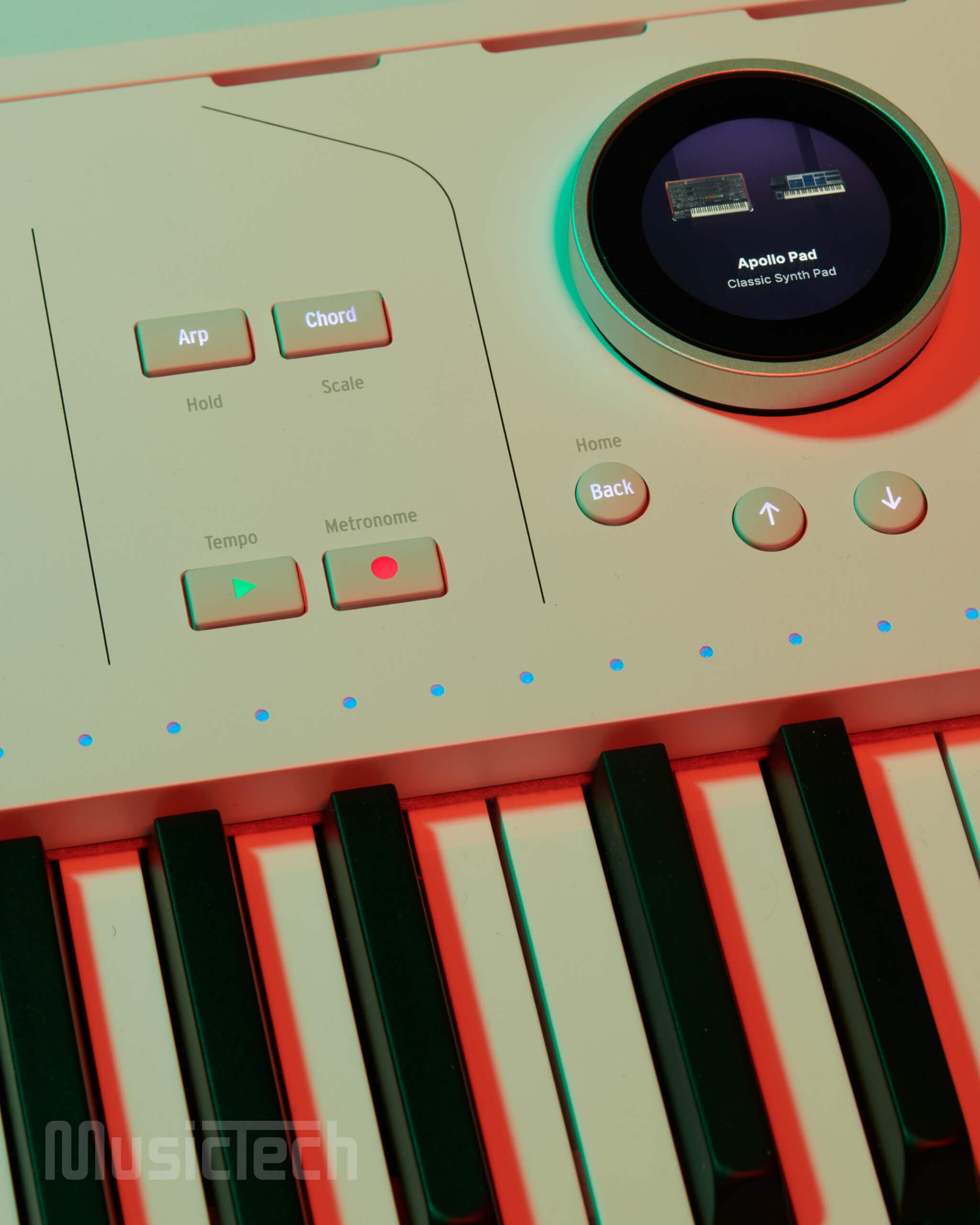
On the included Mini V preset, ‘A Bass You’ll Use’, for instance, Brightness controls the filter, Timbre is filter resonance, Time is the envelope release (with an extreme setting resulting in a latched drone) and Movement controls both the frequency and amplitude of an LFO routed to the filter.
Another, very different example is the ‘Walk Of Life’ organ preset: this time, Brightness increases harmonic content by incrementally, virtually pulling out organ stops. Timbre controls drive, the higher the Time setting the slower the attack (emulating the swell of a volume pedal), and Movement intensifies the rate of a virtual Leslie speaker for some satisfyingly warbling Hammond-style vibrato.
Now, in one sense, this teeters dangerously close to making the AstroLab a blunt instrument, belying the customizability of Arturia’s fabulously deep software emulations and in turn the joy of translating that into a hardware environment. But remember: this is also something of the remit— and strength— of its parent Analog Lab, which has identical controls in its onscreen environment. And, while offering deeper editing of presets, as such provides a considerably streamlined array of instruments for those primarily in the business of reaching their desired sounds quickly. There’s also a balancing act to consider: too many assignable controls with no direct labels would make it easy to forget what any given knob does— particularly in a low-light, live setting.
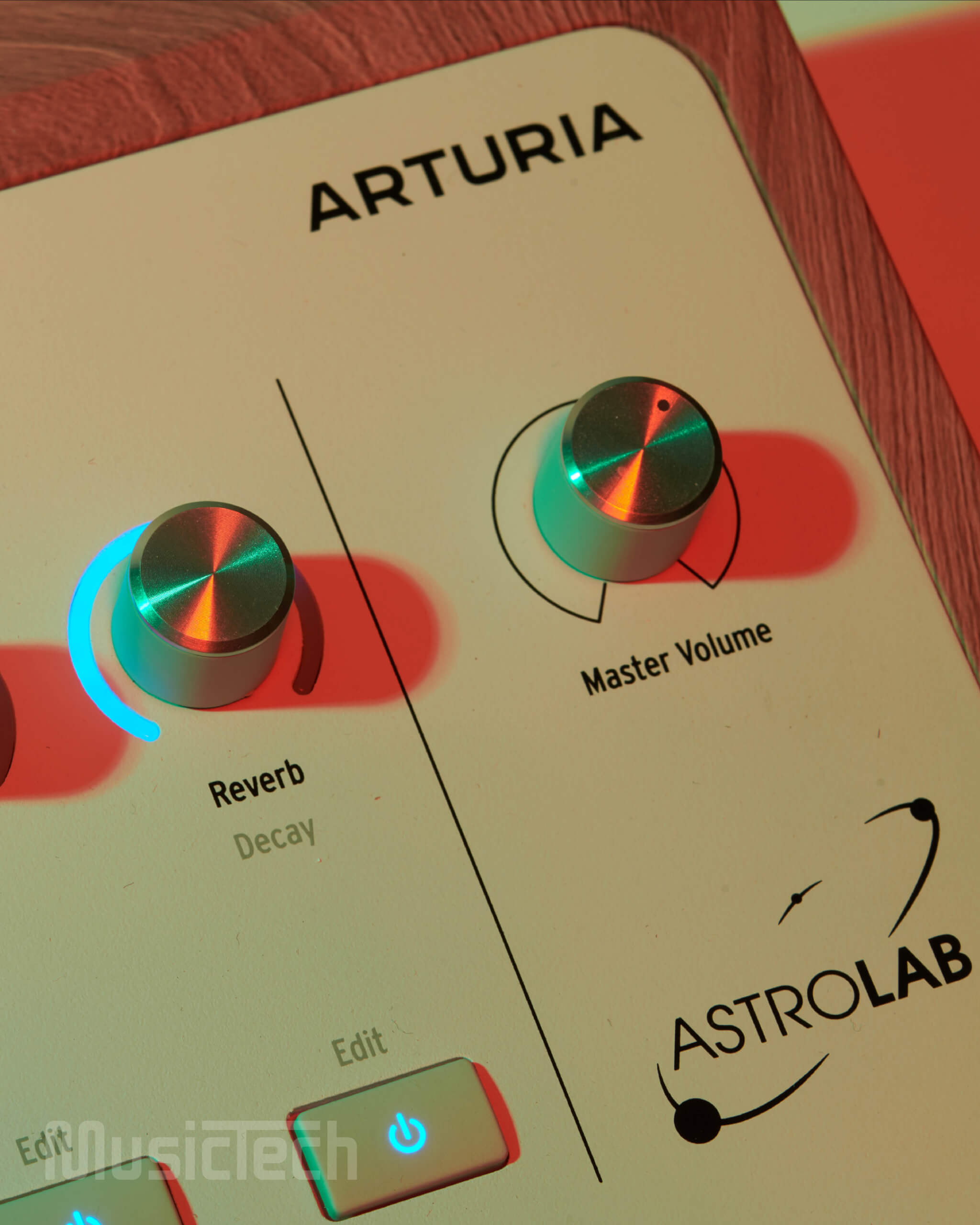
The point is, Arturia clearly expects the lion’s share of preset editing to be taken care of long before taking it out onto the stage. Spend hours at home or in the studio finding the exact Juno or Augmented Strings sound you need, then take it out on the road with just the four parameters to worry about for confident, low-risk, hands-on variation and performability; with the aforementioned FX A and B and delay and reverb on hand as well.
Arturia had the classy idea to make the AstroLab’s knobs capacitive, so simply touching one with your finger brings up the parameter value onscreen without needing to move it— an onstage bugbear of many a synthesis.
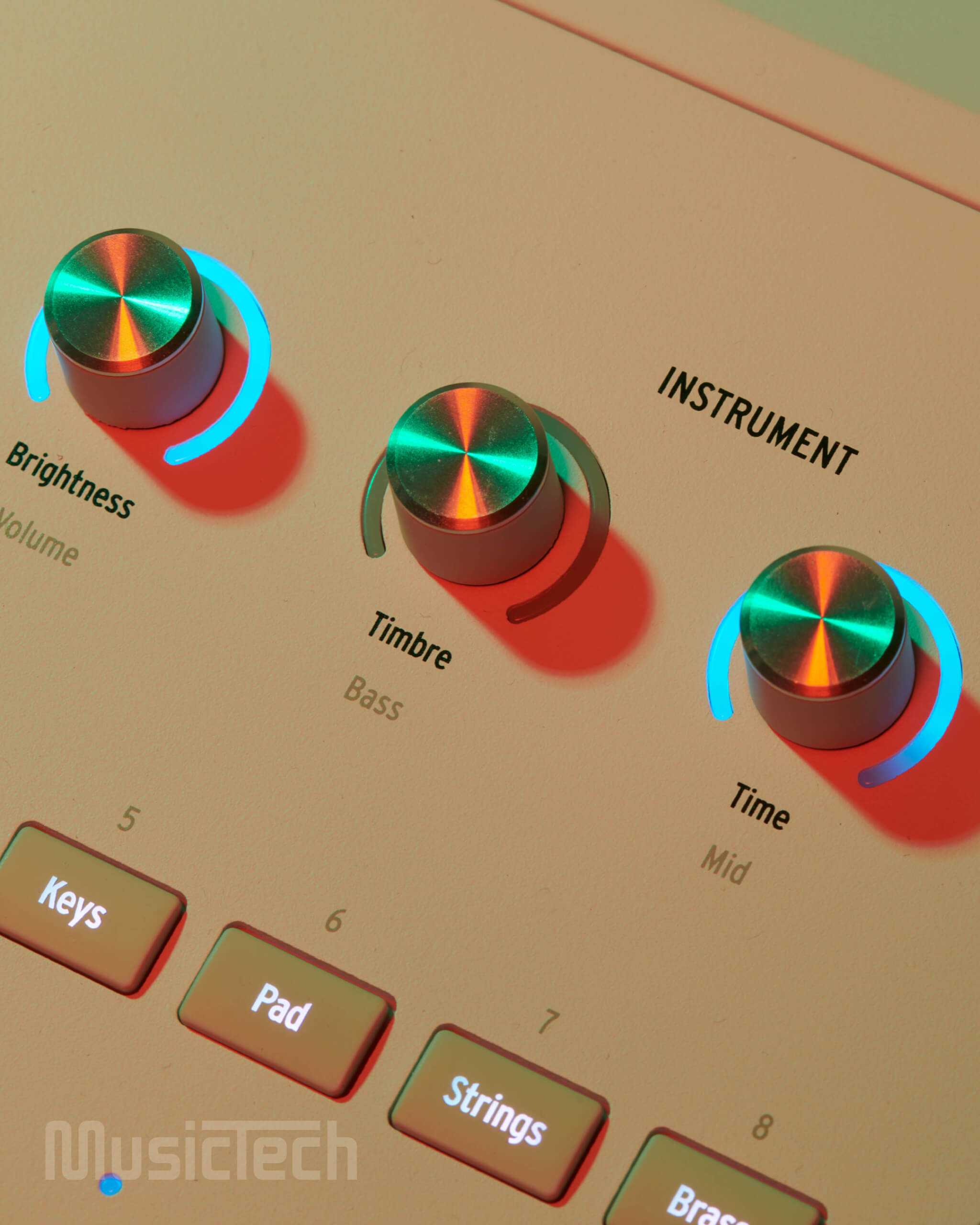
Should you buy Arturia’s AstroLab?
All things considered, it’s hard to imagine a better companion to the already-proven Analog Lab than the AstroLab and, by extension, a better-suited instrument for taking carefully curated sounds out of the studio and out on the road for stress-free gigging.
Arturia has long proven itself as a leading developer in both the worlds of software and hardware, and with AstroLab has managed to build a wholly new type of bridge between the two. The price may well be a barrier for many — indeed, people online have already pointed out that buying an Arturia Keylab Essential mk3, an affordable Windows tablet and V collection would be more affordable and potentially more powerful — if not a completely different concept and workflow approach.
Still, AstroLab is a strong move from Arturia and we wouldn’t be surprised if it inspires a plethora of other developers to attempt the same.
Learn more at arturia.com
[Editor’s note: A previous version of this review stated that the AstroLab is “pretty expensive”. Upon further review, and comparison to other products in this category, we have since concluded that, though it is not affordable for all customers, it’s fairly priced in context. We apologise for any inconvenience caused.]